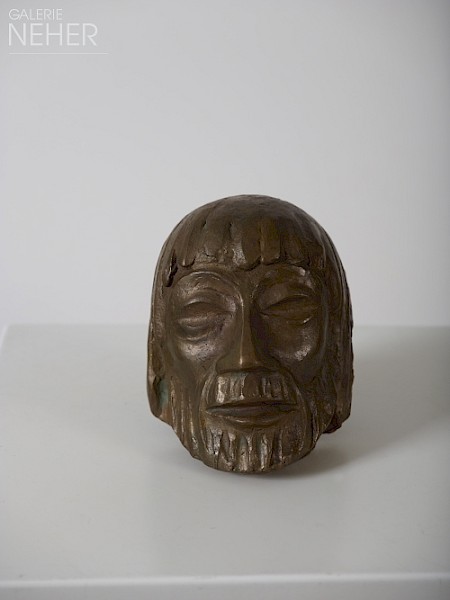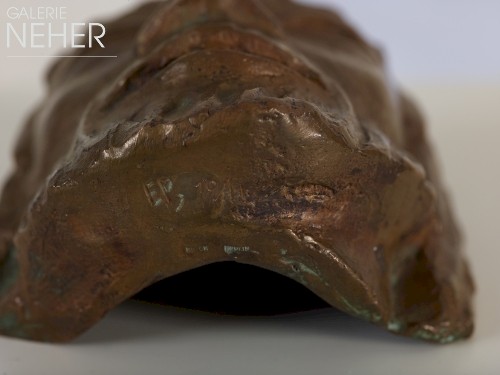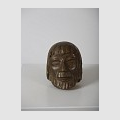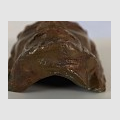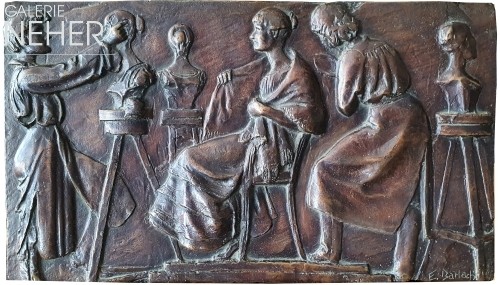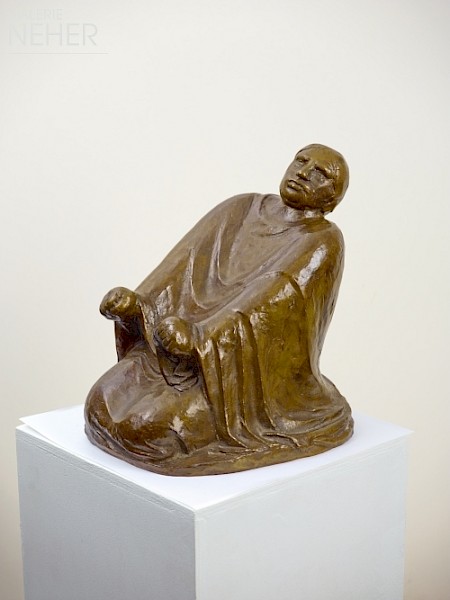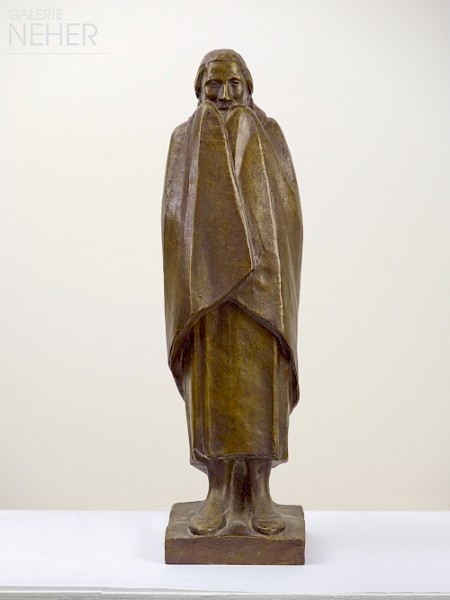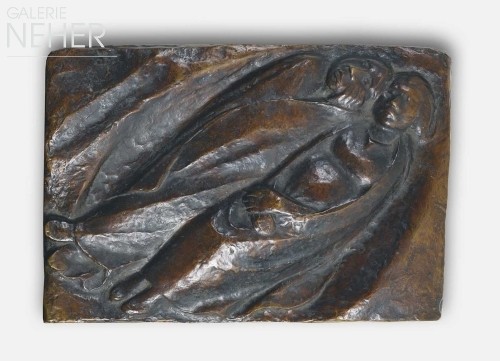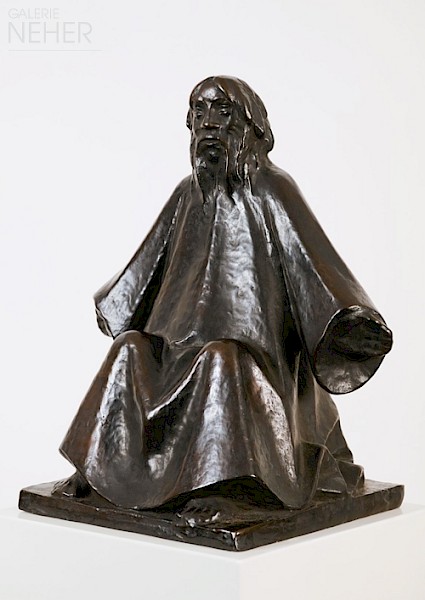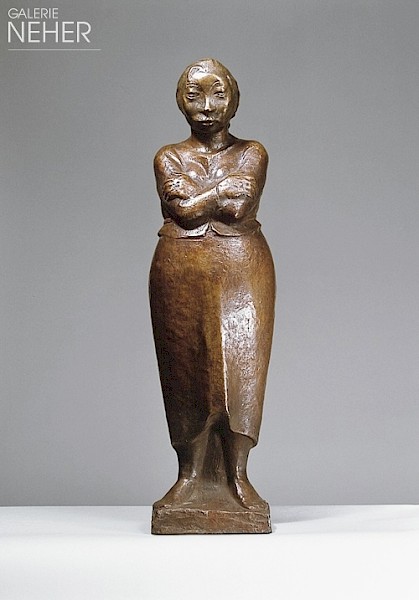Ernst Barlach - Christusmaske VI (Christ Mask VI), 1931
Bronze
15 x 12 x 8 cm
5 x 4 x 3 inch
monogrammed, numbered under the chin:
“EB 10/11”
beneath this in tiny lettering the caster stamp: “H. NOACK BERLIN”
Edition: 15 numbered casts after 1947
N 9439
14,800 €
Expertise:
Ernst Barlach Lizenensverwaltung, Ratzeburg
Provenance:
Estate of Ernst Barlach, Ratzeburg
Catalogue raisonné:
Elisabeth Laur, Ernst Barlach. Werkverzeichnis, part 2, Das plastische Werk, Güstrow 2006, no. 485
Ernst Barlach - Christusmaske VI (Christ Mask VI), 1931
Bronze
15 x 12 x 8 cm
5 x 4 x 3 inch
monogrammed, numbered under the chin:
“EB 10/11”
beneath this in tiny lettering the caster stamp: “H. NOACK BERLIN”
Edition: 15 numbered casts after 1947
N 9439
14,800 €
Expertise:
Ernst Barlach Lizenensverwaltung, Ratzeburg
Provenance:
Estate of Ernst Barlach, Ratzeburg
Catalogue raisonné:
Elisabeth Laur, Ernst Barlach. Werkverzeichnis, part 2, Das plastische Werk, Güstrow 2006, no. 485
About the work
Several detail studies of Christ’s face originated in the context of Barlach’s work on Lehrender Christus (Teaching Christ) in 1931. The artist found a satisfying form and a definitive version in the archaically stylised form of the Christusmaske VI version. The face seems enraptured and meditative. At the same time, the slightly opened mouth of the bearded man conveys the impression of giving an address, which brings the represented figure to life. Barlach’s Christ thus transports an expression that is supratemporal and transcendent, but at the same time eminently worldly. In his representation, the artist combines the supernatural, because stylised son of God with the attribute of the temporal teacher, thus designing a modern image of Christ. “Neither be ye called masters: for one is your master, even Christ.“ (Matthew 23:10) One of the total of 14 posthumously realised casts of the Lehrender Christus is found in the Antoniterkirche in Cologne, together with the second cast of Barlach’s Güstrower Ehrenmal (Güstrow Cenotaph), also known as Schwebender (floater), and a replica casting of Kruzifix II. (Crucifix II), created in 1918.
His artist colleague Käthe Kollwitz accurately summarised what is exceptional and still fascinating about Barlach’s work in 1938 on the occasion of his death: “Form and content concurred. That is what is convincing in his work.”(1)
In the course of his life, Barlach created around 2000 drawings, 450 sculptures, 100 sketchbooks and countless lithographs and woodcut prints. He died in the St.-Georg hospital in Rostock at the age of 68 after a heart attack and was buried in Ratzeburg next to his father.
1 Cited from: Frank Pergande, Bildnis des Künstlers als Ekel, FAZ.NET (last accessed on 6.2.2020).
Text authored and provided by Dr Andrea Fink, art historian
The art historian, curator and freelance publicist Andrea Fink studied art history, cultural studies and humanities, modern history and philosophy in Bochum and Vienna. Doctorate in 2007 on the work of the Scottish artist Ian Hamilton Finlay. As a freelance curator and art consultant, her clients include, among others, the Kunstverein (art association) Ahlen, Kunstverein Soest, Wella Museum, Museum am Ostwall Dortmund, ThyssenKrupp AG, Kulturstiftung Ruhr, Osthaus Museum Hagen, Franz Haniel GmbH, Kunsthalle Krems, Austria.
